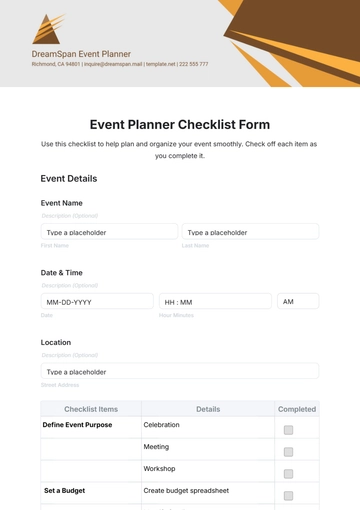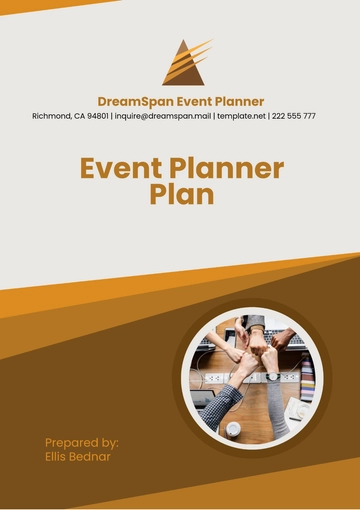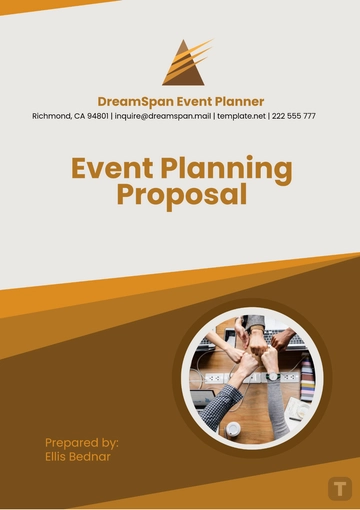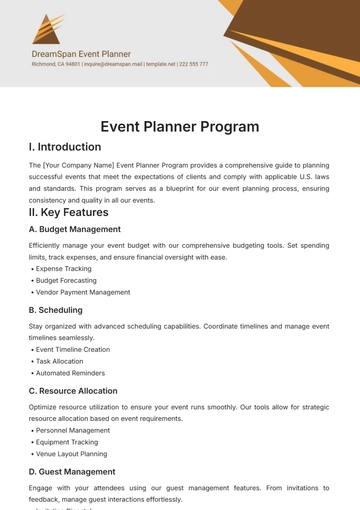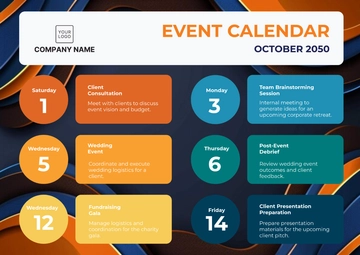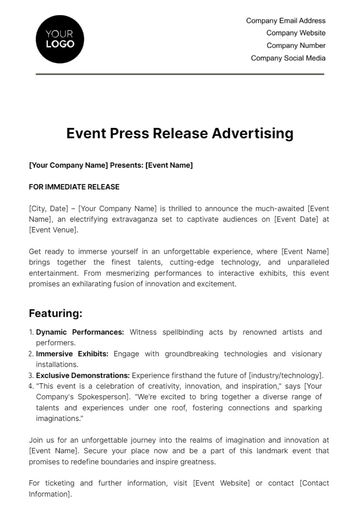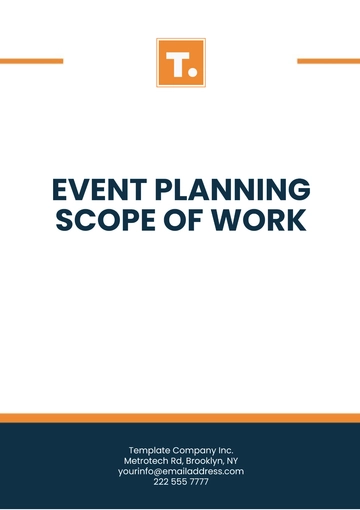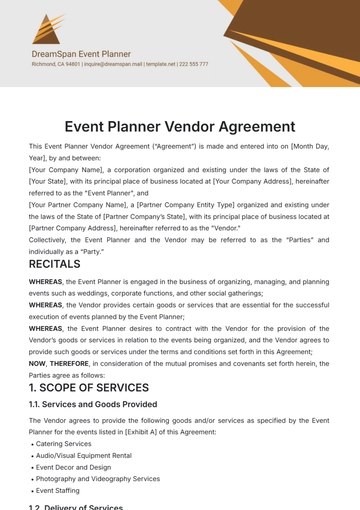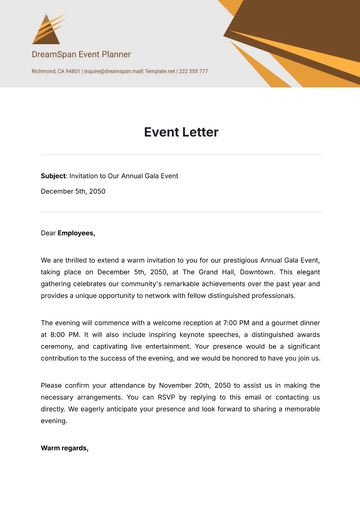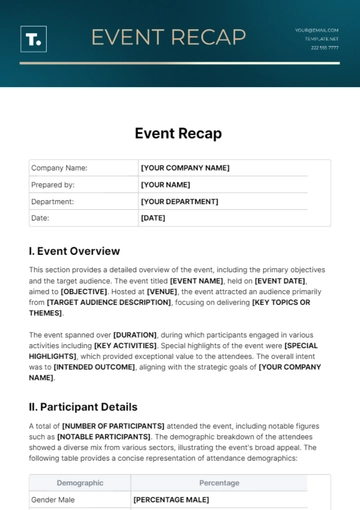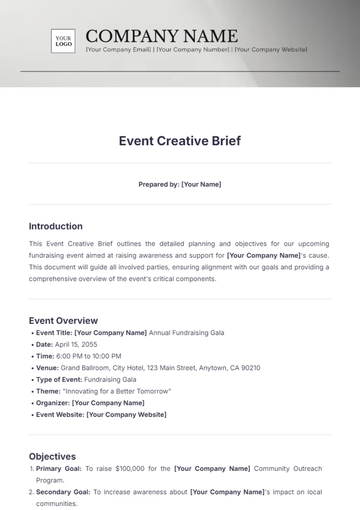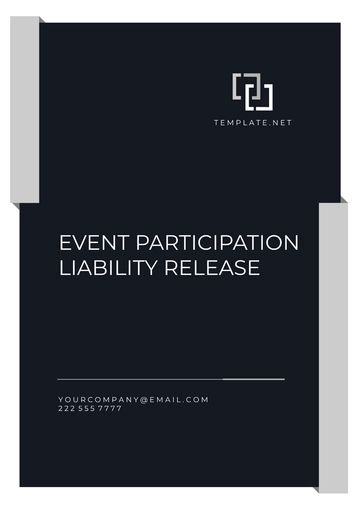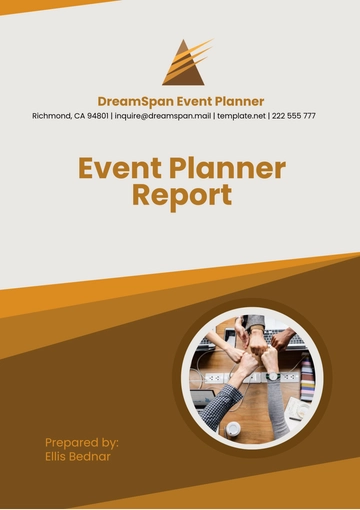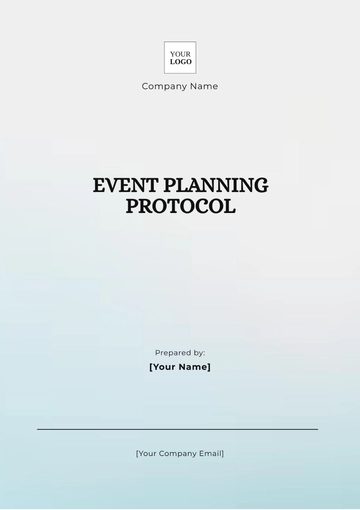Free Event Vendor Management Advertising Protocol
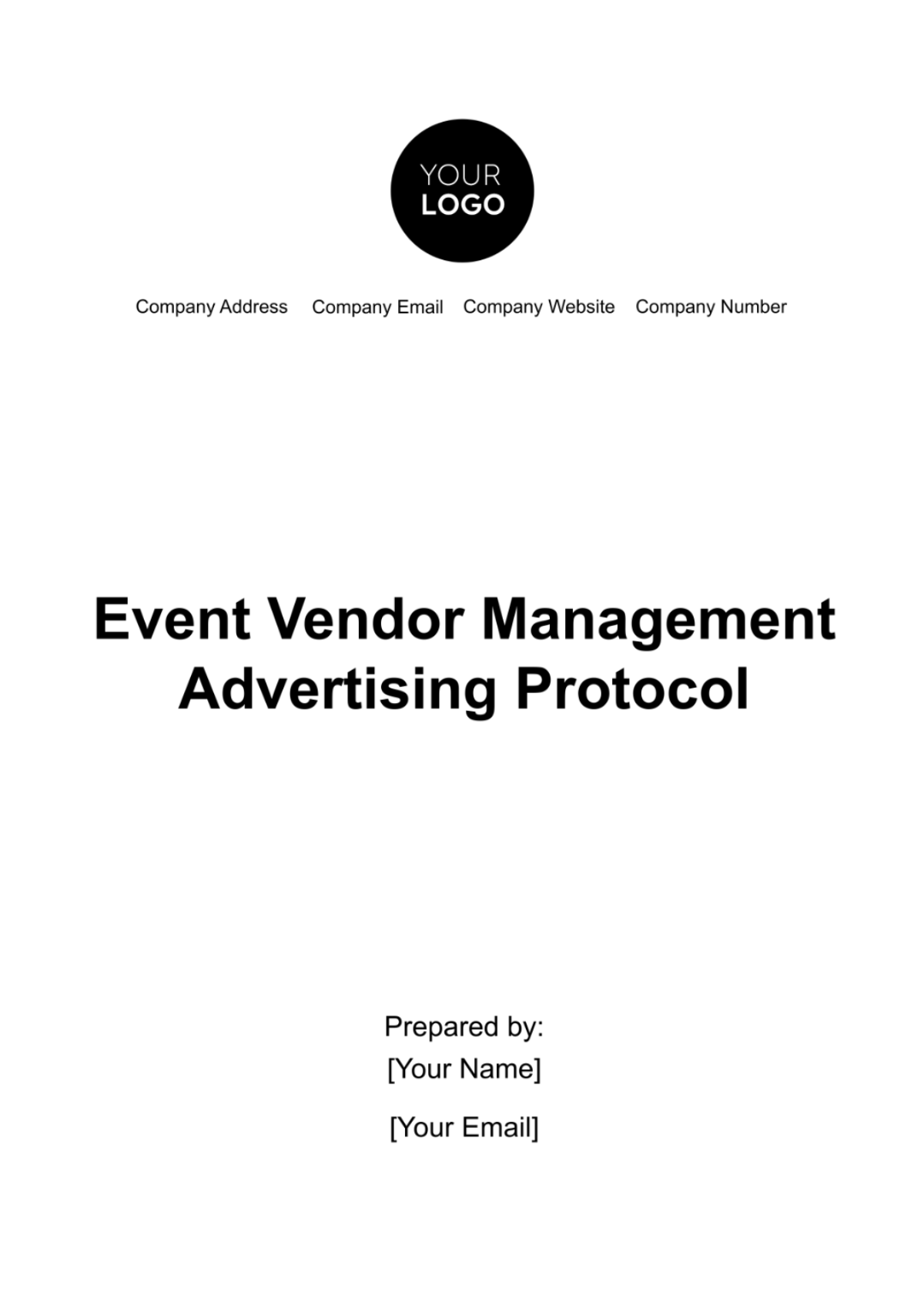
I. Introduction
Purpose Of The Event Vendor Management Advertising Protocol
The Event Vendor Management Advertising Protocol (EVMAP) serves as a foundational document meticulously crafted to orchestrate and optimize the intricate processes associated with managing vendors engaged in event advertising endeavors. Its primary purpose is to establish a systematic and transparent framework, providing clarity and direction to stakeholders involved in the dynamic realm of event planning and promotion.
Scope And Applicability
EVMAP extends its influence across the entire spectrum of event advertising, encapsulating the diverse facets of vendor engagement. From the initial stages of vendor selection to the meticulous crafting of contractual agreements, adherence to advertising standards, and the intricacies of performance evaluation, this protocol serves as a guiding beacon. Designed with precision, it is applicable to all tiers of stakeholders involved in orchestrating and executing events, ensuring a unified and efficient approach to vendor management in the context of advertising initiatives.
II. Vendor Selection And Onboarding
A. Vendor Selection Criteria
Expertise And Experience
In the meticulous process of vendor selection, paramount consideration is given to the vendor's demonstrated expertise and proven experience in executing successful event advertising campaigns. Vendors must showcase a comprehensive understanding of industry trends, innovative approaches, and a track record of delivering impactful advertising solutions.
Alignment With Event Advertising Objectives
The alignment of vendor capabilities with the specific advertising objectives of the event is a cornerstone criterion. This involves a detailed analysis of how the vendor's strengths complement the event's branding, messaging, and overall promotional goals. A scoring matrix aids in the systematic evaluation of alignment factors.
Table: Vendor Alignment Scoring Matrix
Criteria | Weight | Vendor A Score | Vendor B Score | Vendor C Score | Total Score |
Relevance Of Expertise | 30% | 28 | 25 | 30 | 83 |
Previous Event Experience | 25% | 22 | 24 | 20 | 66 |
Creativity And Innovation | 20% | 18 | 20 | 22 | 60 |
Understanding Of Brand | 15% | 14 | 16 | 18 | 48 |
Cost-Effectiveness | 10% | 8 | 10 | 9 | 27 |
Total | 100% | ||||
B. Proposal Evaluation Process
The proposal evaluation process involves a thorough review of vendor submissions based on predefined criteria such as project approach, methodology, and budget considerations. The Evaluation Committee, as outlined in Section 5.2, utilizes a standardized evaluation form (Appendix B) to ensure a fair and transparent assessment.
C. Onboarding Procedures
Successful vendors proceed to the onboarding phase, where a detailed orientation program ensures a seamless integration into the event advertising ecosystem. This includes an introduction to internal processes, collaboration tools, and key contacts, fostering a collaborative and productive partnership from the outset.
III. Contractual Agreements
A. Comprehensive Contract Templates
Scope Of Work Definition
In this section, articulate a detailed and unambiguous delineation of the scope of work, outlining the specific tasks, deliverables, and milestones expected from the advertising vendor. Clearly define the boundaries of the vendor's responsibilities to avoid misunderstandings during project execution.
Timelines And Milestones
Provide a structured timeline for the advertising campaign, specifying key milestones and deadlines. This includes the submission dates for drafts, revisions, and the final delivery. A well-defined timeline ensures alignment with the overall event schedule and facilitates effective project management.
Financial Arrangements And Payment Terms
Clearly outline the financial aspects of the agreement, detailing the compensation structure, payment milestones, and any applicable taxes or fees. Specify payment terms, such as invoicing procedures and due dates, to establish a transparent and fair financial arrangement beneficial to both parties.
B. Contract Review And Approval Process
Prioritize a thorough review process involving all relevant stakeholders to ensure that contractual terms align with the event's advertising goals and organizational policies. Implement a systematic approval process, detailing the steps and individuals responsible for reviewing and approving contracts. This ensures that all parties are in consensus before formalizing the agreement, minimizing potential disputes and ambiguities.
C. Amendment Protocols
Establish a clear procedure for contract amendments to accommodate unforeseen changes or modifications in project requirements. Specify the conditions under which amendments are permissible, the approval process, and documentation requirements. This proactive approach ensures agility in adapting to evolving project needs while maintaining the integrity of the contractual framework.
The Contractual Agreements section of the Event Vendor Management Advertising Protocol is designed to provide a robust foundation for the collaboration between event organizers and advertising vendors. Through comprehensive templates, meticulous review processes, and adaptive amendment protocols, this section aims to foster clarity, transparency, and a mutually beneficial contractual relationship.
IV. Advertising Standards And Guidelines
In this section, meticulous attention is given to establishing clear and robust standards for the creation and execution of advertising materials during events. The purpose is to ensure that all advertising endeavors align with the highest quality and compliance standards. The guidelines herein cover various aspects, including content specifications, design intricacies, and adherence to regulatory frameworks.
Content Specifications
A. Text Guidelines
Clear and concise directives for the creation of compelling and informative textual content. This encompasses tone, messaging consistency, and language precision to resonate effectively with the event's target audience.
B. Visual And Multimedia Guidelines
Comprehensive instructions governing the use of visuals, multimedia elements, and interactive content. Emphasis is placed on visually engaging materials that not only capture attention but also align with the event's overarching theme and brand identity.
Design Specifications
This subsection delves into the visual aspects of advertising materials, setting forth guidelines for layout, color schemes, typography, and overall aesthetics. The goal is to create visually appealing and cohesive designs that contribute to a memorable and unified event experience.
Compliance With Regulations
Addressing legal and regulatory considerations is paramount in this subsection. Detailed guidelines ensure that all advertising materials adhere to relevant laws, industry standards, and ethical practices. This includes but is not limited to data protection regulations, copyright compliance, and any specific industry codes of conduct.
By meticulously delineating these Advertising Standards and Guidelines, the Event Vendor Management Advertising Protocol aims to empower vendors with a clear roadmap for crafting impactful and compliant advertising materials, thereby contributing to the overall success and reputation of the event.
V. Communication Protocols
Effective communication is paramount to the success of advertising campaigns during events. The Communication Protocols outlined in this section establish structured channels and procedures to ensure seamless collaboration between event organizers and advertising vendors.
Channels Of Communication
Clear and efficient communication channels are established to facilitate timely updates, address queries, and foster a collaborative environment. The primary communication channels include:
Channel | Purpose |
Formal communication, document sharing, and updates. | |
Project Management Tool | Real-time collaboration, task assignment, and tracking. |
Weekly Meetings | Scheduled meetings for status updates and issue resolution. |
Reporting And Update Frequency
Regular reporting is essential for tracking the progress of advertising campaigns. The following reporting schedule is implemented to ensure transparency and timely feedback:
Report Type | Frequency | Distribution |
Weekly Progress Report | Every Monday | Event Organizer Team |
Performance Metrics | Monthly | Event Organizer Team |
Ad-hoc Updates | As needed | Relevant Stakeholders |
Issue Resolution Procedures
In the event of challenges or discrepancies, a structured issue resolution process is in place to address and rectify issues promptly. The procedure includes:
Issue Identification: Clearly define and document the issue.
Escalation: Escalate the issue to the designated point of contact.
Resolution Plan: Develop and implement a plan to resolve the issue.
Communication: Communicate the resolution to all relevant parties.
Documentation: Document the issue and resolution for future reference.
These Communication Protocols are designed to enhance collaboration, minimize misunderstandings, and ensure that all stakeholders are well-informed throughout the advertising campaign's lifecycle.
VI. Performance Metrics And Reporting
Efficient monitoring of advertising campaign effectiveness is paramount to the success of events. This section outlines the key components of performance evaluation and reporting, providing a structured approach to gauge the impact of advertising efforts.
Key Performance Indicators (KPIs)
Impressions And Reach: Evaluate the extent of audience exposure and engagement with the advertising content.
Conversion Metrics: Analyze the conversion rates and assess the effectiveness of the advertising in driving desired actions.
Reporting Templates
Streamlined reporting templates are provided to facilitate clear and concise communication of performance metrics. These templates ensure a standardized approach, aiding in the consistent assessment of vendor contributions.
Performance Review Meetings
Scheduled performance review meetings allow for in-depth discussions on the reported metrics. These sessions provide a platform for constructive feedback, strategy refinement, and collaborative problem-solving to enhance overall campaign performance.
VII. Compliance And Legal Considerations
Ensuring adherence to legal and industry standards is paramount in the execution of advertising activities during events. This section outlines the key components:
Legal Requirements
Detailed exploration of local, regional, and international legal considerations pertaining to event advertising.
Clarity on permissions, intellectual property rights, and any restrictions imposed by relevant authorities.
Industry Standards
Alignment with established industry best practices and ethical standards in advertising.
Guidelines for maintaining transparency, honesty, and integrity in all promotional materials.
Quality Assurance And Testing
Procedures for rigorous quality checks to guarantee that advertising content complies with predefined standards.
Testing protocols to ensure the seamless integration of advertising materials with the overall event experience.
In essence, this section provides a robust framework for navigating the legal landscape and upholding industry norms, thereby safeguarding the event's reputation and ensuring the lawful execution of advertising initiatives.
VIII. Vendor Relationship Management
Vendor Relationship Management (VRM) is a critical aspect of the Event Vendor Management Advertising Protocol (EVMAP). This section outlines strategies for fostering positive and collaborative relationships with advertising vendors throughout the event lifecycle.
Key Components
Relationship Building Strategies
Establishing open lines of communication to build trust and understanding.
Facilitating regular interactions to strengthen the partnership.
Promoting a collaborative and solution-oriented approach.
Periodic Reviews And Feedback Mechanisms
Conducting regular assessments of vendor performance against predefined metrics.
Implementing structured feedback sessions to address strengths and areas for improvement.
Iterative improvement based on feedback to enhance overall collaboration.
Continuous Improvement Strategies
Implementing mechanisms for ongoing performance evaluation.
Proactively identifying opportunities for optimization and innovation.
Adapting strategies based on lessons learned from previous events.
Vendor Relationship Management ensures a symbiotic collaboration, aligning the goals of event organizers and advertising vendors for the successful execution of advertising campaigns. This proactive and iterative approach contributes to sustained excellence in vendor partnerships across various events.
IX. Contingency Planning
Contingency planning within the Event Vendor Management Advertising Protocol (EVMAP) is a crucial aspect designed to proactively address unforeseen challenges and ensure the seamless execution of advertising activities during events. This section outlines a comprehensive approach to risk assessment, delineates robust backup plans, and establishes crisis management procedures to safeguard the integrity of advertising campaigns.
Risk Assessment
In this phase, the EVMAP mandates a meticulous analysis of potential risks that may impede the smooth progression of advertising activities. Risks are categorized, assessed for severity and likelihood, and prioritized based on their potential impact. This process enables the identification of vulnerabilities, allowing the development of targeted strategies to mitigate, transfer, or accept risks.
Backup Plans
The EVMAP emphasizes the creation of well-defined backup plans tailored to specific contingencies. These plans encompass alternative strategies, resource allocation adjustments, and communication protocols to enact swiftly should primary plans encounter disruptions. Clear guidelines are provided to vendors on activating backup plans seamlessly, ensuring minimal disruption to the overall advertising campaign.
Crisis Management Procedures
In the unfortunate event of a crisis, the EVMAP establishes a set of procedures to guide event organizers and advertising vendors through effective crisis management. This includes a designated crisis response team, communication protocols for internal and external stakeholders, and predefined actions to contain, mitigate, and recover from the crisis. Regular drills and simulations are encouraged to enhance preparedness and responsiveness.
Contingency planning, as delineated in the EVMAP, not only fortifies the resilience of advertising endeavors but also fosters a proactive culture, empowering stakeholders to navigate uncertainties with agility and precision. By integrating these measures, the EVMAP ensures that advertising activities remain robust and adaptable, even in the face of unexpected challenges.
- 100% Customizable, free editor
- Access 1 Million+ Templates, photo’s & graphics
- Download or share as a template
- Click and replace photos, graphics, text, backgrounds
- Resize, crop, AI write & more
- Access advanced editor
Introducing Template.net's Event Vendor Management Advertising Protocol Template. This editable and customizable tool, powered by our AI Editor Tool, simplifies vendor coordination for seamless event execution. Streamline vendor communications, agreements, and logistics effortlessly. Elevate your event planning with Template.net's innovative solutions.
You may also like
- Event Flyer
- Event Presentation
- Event Poster
- Event Planner
- Event Letter
- Event Program
- Event Invitation
- Event Ticket
- Event Proposal
- Plan Event
- Event Banner
- Event Calendar
- Event Checklist
- Event Schedule
- Event Brochure
- Event Planning Contract
- Event ID Card
- Event Menu
- Event Report
- Event Agreement
- Event Form
- Event Postcard
- Event Quotation
- Event Budget
- Event Sheet
- Event Logo
- Event Planner Business Card
- Event FlowChart

